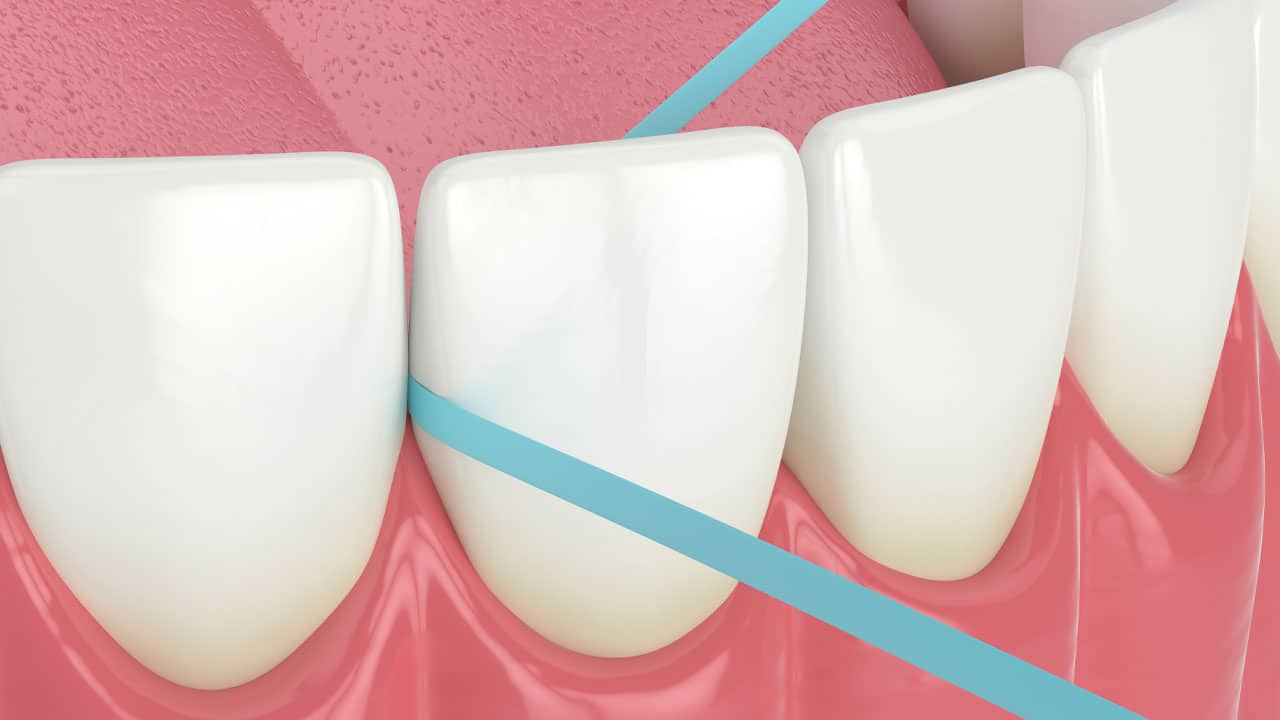
Every dentist in the world has asked their patient the age-old question: “How often are you flossing?” It’s one of the most crucial parts of your at-home oral hygiene routine—but unfortunately, it’s also one of the most dreaded. Flossing gets a bad reputation, with most people saying that it’s either too time-consuming or that it’s painful.
If you’re one of the 6 in 10 Americans who aren’t flossing every day, now is the perfect time to start! The truth is that flossing doesn’t have to be uncomfortable or overwhelming. When done properly, flossing is a simple and straightforward way to keep your teeth and gums as healthy as possible. Before we get into the proper flossing technique, let’s take a look at why flossing is such a fan favorite among dental recommendations.
Key Benefits of Flossing
Sure, brushing is a key piece of keeping your mouth healthy—but you can’t clean your entire mouth on brushing alone. Toothbrush bristles miss food particles that are trapped between your teeth and along your gum line, leaving room for harmful bacteria to grow and multiply. This causes plaque and tartar buildup, which eventually leads to cavities, tooth decay, tooth loss, and gum disease.
Dental floss gets into the cracks and crevices between your teeth, freeing particles that are stuck or lodged along your gum line. Flossing also helps break up plaque that has already begun to form, helping to protect against infection via periodontal disease. And because it also helps fight against bacteria that cause bad breath, flossing is truly a multi-faceted way to ensure that your mouth (and your smile) stays healthy for years to come.
Are You Flossing Correctly? Best Flossing Methods
Flossing is one of the best things that you can do to keep your mouth healthy—but there is a right way and a wrong way to floss! Using dental floss the wrong way is often what contributes to common complaints such as discomfort, pain, or bleeding. Let’s look at the best ways to floss:
Brush after you floss—not before
The best time to use dental floss is actually before you begin brushing, rather than after. Flossing before you brush makes the cleaning job much easier on your toothbrush: you can loosen up plaque and remove any stuck food particles with floss. This also makes brushing more efficient, contributing to a better oral hygiene routine all around.
Don’t skimp on floss
In order to get into all of the crevices between your teeth—and to do it comfortably—you’ll need to make sure you are using enough floss. Cut off between 12–18 inches, and make sure that you are using a new section each time you move to a new part of your mouth.
Be gentle
If you aren’t using slow, gentle motions, dental floss can actually cut into your gums and cause pain and discomfort. Don’t rush through flossing: with a firm grip on the floss, use small up-and-down motions and create a “C” shape to hug the base of each tooth. It may take some time before you get used to the rhythm—but eventually, you should be able to floss your entire mouth in five minutes or less.
At Caputo Dental, we encourage our patients to embrace flossing and all of its benefits. Add this simple step to your daily routine and start experiencing renewed health for your teeth and gums! Give us a call today: we’re happy to help guide you toward our favorite dental floss and flossing tools to make the process even easier.